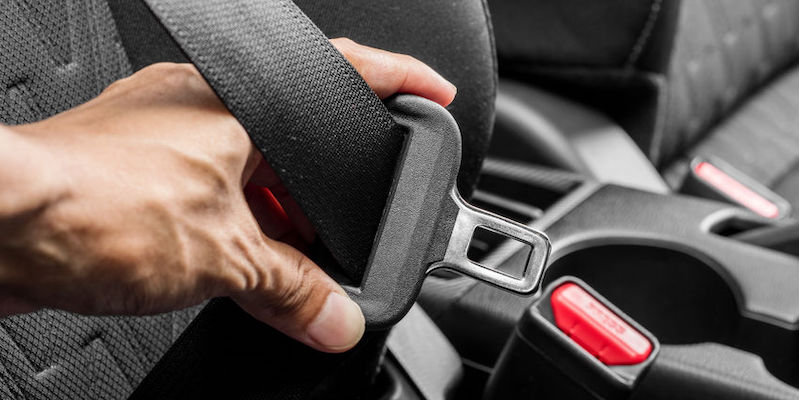Seat belt use in Colorado is at 86 percent, close to the national average of 90 percent.
Buckling Up Could Save Dozens of Lives in the State Each Year
“Nearly 300 Coloradans have been killed in passenger vehicle crashes this year,” said Chief Matthew Packard, of the Colorado State Patrol, in December 2020. “Over half of those involved unbuckled drivers or passengers. Buckling up would have helped them survive.”
In 2019, 196 of 377 auto accident fatalities in Colorado involved unbelted drivers and passengers.
The Colorado Department of Transportation reports that the rate of seat-belt use in the state is 86 percent; the national average is 90 percent. The rate in Denver, the highest in the state, is 93 percent. The four counties with the lowest estimated rate of seat belt use in the state during 2020 are Chafee (79.3 percent), Weld (76 percent), Pueblo (74.2 percent), and Cheyenne (68.5 percent).
Colorado Seat Belt Laws
It is illegal to travel in a vehicle in Colorado without being buckled up.
- Colorado drivers and front-seat passengers are violating the state’s seat belt law if they are not buckled up but can be ticketed for failing to wear one only if the driver has been stopped for violating some other traffic safety law.
- Under Colorado’s Graduated Drivers Licensing laws, the driver “and all passengers under 18 must wear seat belts.”
- A driver can be pulled over and cited if a law enforcement officer observes a child under 16 who is unrestrained or improperly restrained in the vehicle in violation of the state’s Child Passenger Safety law.
Safety experts estimate that at least 70 lives could be saved each year in Colorado if seat belts were used as required 100 percent of the time.
Resistance to Seat Belts
As late as the mid-1980s, many Americans were reluctant to use seat belts, and a small but vocal minority continue to protest their use.
It wasn’t until the mid-1950s that carmakers began to offer seat belts as an option in new cars. In 1956, only two percent of Ford buyers paid the $27 to have them installed. In 1968, the National Highway Traffic Safety Administration (NHTSA) began to mandate lap and shoulder belts in new cars.
As recently as the early 1980s, though, seat belt use remained voluntary, most U.S. drivers did not use them, and 65 percent opposed mandatory seat belt laws. According to the NHTSA, less than 15 percent of Americans used seat belts consistently in 1983. A 1985 survey found that many drivers regarded seat belts as “ineffective, inconvenient, and uncomfortable,” arguing incorrectly that it was safer to be thrown clear from a crash than to be trapped inside a vehicle by a seat belt.
In 1984, New York became the first state to pass a mandatory seat belt use law, and other states followed. Colorado passed the state’s first universal seat belt law in 1987. Most Americans now regularly use seat belts, and the only state where adults are not legally required to buckle up is New Hampshire.
Contact an Experienced Colorado Personal Injury Attorney
If you or a loved one has been injured in an accident, contact the Law Offices of Daniel R. Rosen online or call 303-454-8000 or 800-ROSEN-911 to schedule your free initial consultation with an experienced personal injury attorney today.

